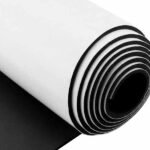When planning water activities, wearing the right gear can make a significant difference in comfort and safety. Many people often confuse wetsuits and diving suits, but they serve distinct purposes depending on the activity. Let’s explore the unique characteristics of these suits to understand their differences and help you make the best choice for your needs.
A wetsuit and a diving suit differ in design, purpose, and thermal insulation capabilities. A wetsuit keeps you warm by trapping a thin layer of water, while a diving suit, often a drysuit, offers a watertight barrier to keep you completely dry and warm in colder waters.
Understanding the functionality and suitability of each type of suit can guide your decision, ensuring optimal performance for your chosen water activity.
What Are Wetsuits and Diving Suits?
Wetsuits and diving suits are essential protective garments for water activities. They are designed to provide thermal insulation, protection, and buoyancy support in aquatic environments.
Wetsuits are made of neoprene and are designed to trap a thin layer of water against the body. Diving suits, particularly drysuits, are watertight garments that keep the body completely dry and insulated, often used in colder conditions.
Wetsuits are lightweight and flexible, making them ideal for activities like surfing, snorkeling, and swimming. Diving suits, on the other hand, are heavier and provide advanced insulation, suitable for deep or cold-water diving.
Key Materials Used
| Suit Type | Material | Purpose |
|---|---|---|
| Wetsuit | Neoprene | Traps water for insulation and flexibility |
| Diving Suit | Neoprene, trilaminate, vulcanized rubber | Provides complete dryness and warmth |
What is the difference between a wetsuit and a diving suit?
The primary difference lies in how each suit handles water and its intended purpose.
A wetsuit allows water to enter and uses body heat to warm it up, providing insulation. A diving suit, especially a drysuit, prevents water entry entirely, relying on air pockets and thermal layers for insulation.
While wetsuits are suitable for moderate water temperatures and shallow dives, diving suits excel in cold and deep-water environments. Diving suits also accommodate additional gear like oxygen tanks and buoyancy compensators, which are often unnecessary for wetsuit users.
How Do Wetsuits and Diving Suits Work?
The mechanism of insulation differs significantly between wetsuits and diving suits.
Wetsuits work by trapping a thin layer of water between the suit and your skin. Your body heat warms this water, creating an insulating barrier. Diving suits, however, create a watertight seal, keeping the body dry and relying on thermal garments underneath to retain warmth.
Wetsuits are compression-sensitive, meaning their insulation decreases at greater depths due to water pressure. Diving suits avoid this issue by relying on air pockets and additional clothing layers for consistent insulation.
Thermal Insulation Comparison
| Suit Type | Insulation Mechanism | Suitable Temperature Range |
|---|---|---|
| Wetsuit | Warmed trapped water | Moderate to warm waters |
| Diving Suit | Air and thermal garments | Cold to freezing waters |
Which Activities Are Suited for Wetsuits and Diving Suits?
Choosing the right suit depends on the activity and water conditions.
Wetsuits are perfect for activities like surfing, swimming, and snorkeling, where flexibility and moderate insulation are required. Diving suits are better for scuba diving, technical diving, and cold-water sports, offering advanced protection and dryness.
Activity Suitability
| Activity | Recommended Suit | Reason |
|---|---|---|
| Surfing | Wetsuit | Flexibility and moderate warmth |
| Scuba Diving | Diving Suit | Insulation in cold and deep waters |
| Snorkeling | Wetsuit | Lightweight and easy to wear |
| Ice Diving | Diving Suit | Complete dryness and warmth |
Which is better, a wetsuit or a drysuit?
The answer depends on your specific needs.
Wetsuits are better for casual water sports in moderate temperatures, offering affordability and ease of use. Drysuits, while more expensive, are essential for cold water or prolonged immersion, providing superior insulation and versatility.
The choice comes down to the activity and environment. For example, a surfer in warm waters benefits from a wetsuit, while a diver exploring Arctic conditions requires a drysuit.
Do surfers wear wetsuits or drysuits?
Surfers almost exclusively wear wetsuits due to their flexibility and streamlined design.
Wetsuits provide the mobility and comfort required for paddling and wave-riding, along with sufficient warmth for moderate water conditions. Drysuits are rarely used in surfing because their bulkiness restricts movement.
Can you use any wetsuit for diving?
Not all wetsuits are suitable for diving.
Diving requires specialized wetsuits designed to withstand water pressure and provide adequate thermal protection at depth. Recreational wetsuits may not have the necessary durability or insulation for diving.
If you plan to dive, it’s essential to choose a suit rated for the intended depth and water temperature.
Conclusion
Understanding the differences between wetsuits and diving suits ensures you’re equipped with the right gear for your water adventures. Whether you’re catching waves or exploring underwater depths, choosing the right suit enhances comfort, safety, and performance.
At Szoneier, we specialize in custom neoprene products, including wetsuits and diving gear. With years of expertise, we ensure every product meets the highest standards of quality and functionality.











